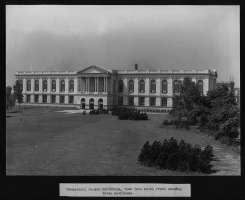Abstract
The present essay argues that among the “incredible range of governmental interventions” mentioned by Foucault, which simultaneously produced the conditions for free trade and the perception of trade as free from governmental interventions, were museums. In a sense, thinking of museums as instruments of the liberal art of government is nothing new. Many years ago, drawing on Foucault, historian Tony Bennett argued that, under the influence of World Fairs in the second half of nineteenth century, the museum was turned into an “exhibitionary complex,” a technology of vision dedicated, in his view, to inculcating in citizens the values of the liberal state in formation: self-improvement and discipline, nationalism, and faith in human and technical progress.4 Many subsequent authors have since criticized this Foucauldian approach, which, they point out, overestimates the coherence and power of museums. Museums, they claim, were historically often messy and underfinanced institutions, whose effectiveness was largely contingent on the people who ran them as well as those who visited them. The present article suggests, taking inspiration from Mitchell, that the role of museums in liberalism can be better understood as a liberalism effect: Museums can produce the effect of liberalism (in which the state does not intervene in the economy). Svetlana Alpers described the effect of the museum as a distinct “way of seeing” that museums have historically entailed, the quality of visual attention that they have tended to require from their visitors. The argument developed here is that drawing a line between the state and the economy is another important effect of the museum.


